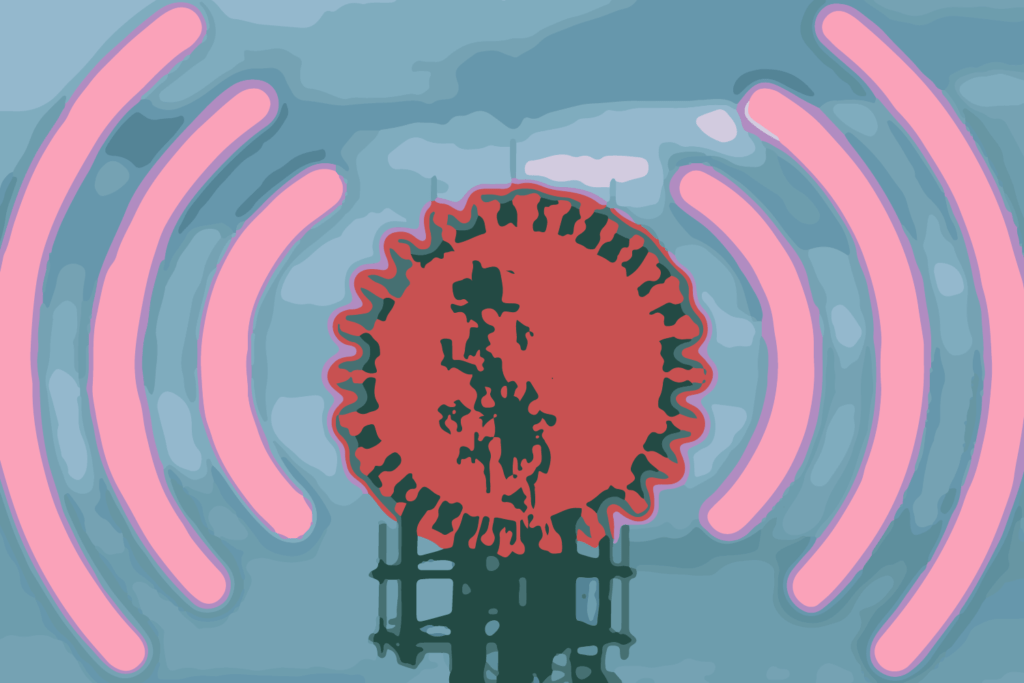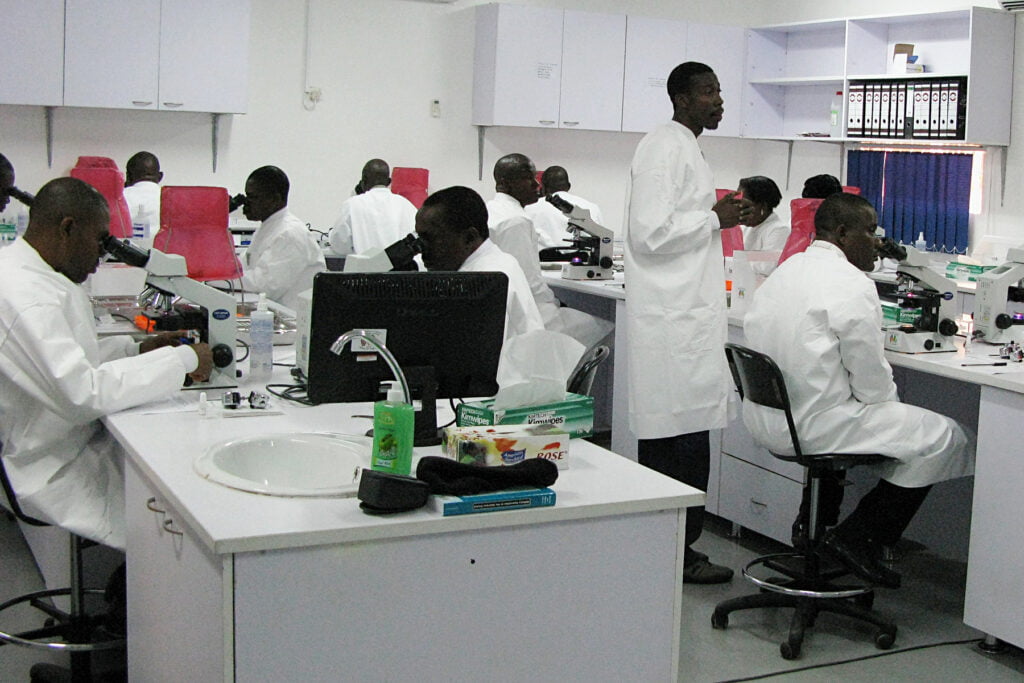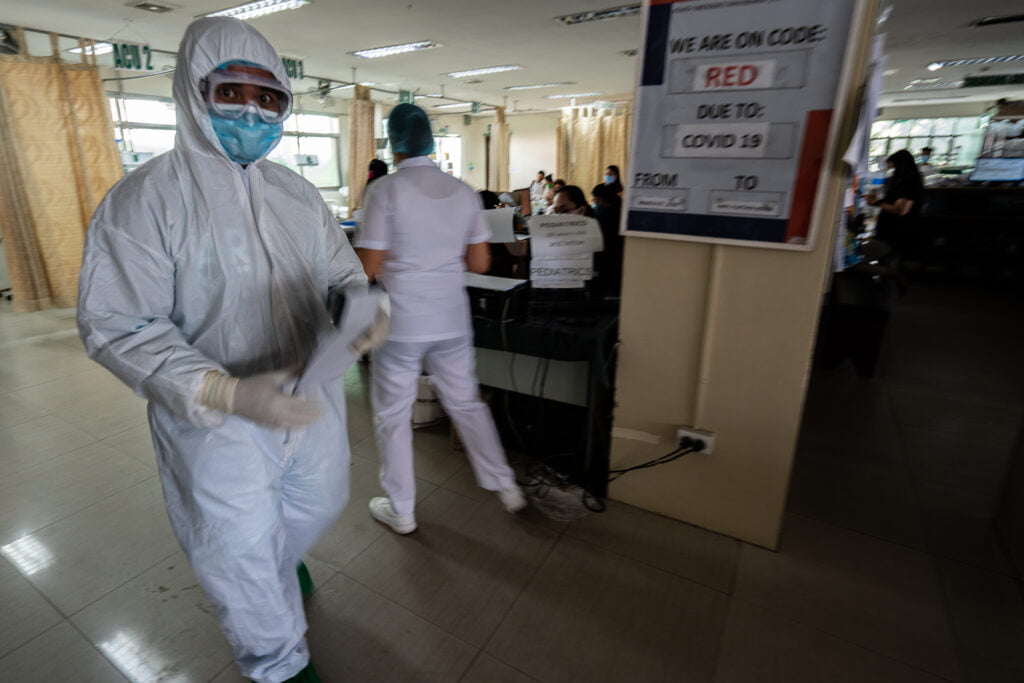Monitoring of wastewater and being alert to unusual cases could help shut pandemics down before they start.
 What have we learnt from previous and current pandemics to help inform us of when the next one might come? : JFB119
What have we learnt from previous and current pandemics to help inform us of when the next one might come? : JFB119
Monitoring of wastewater and being alert to unusual cases could help shut pandemics down before they start.
When pig farmers in Malaysia started getting seriously ill with fever and headache in 1998, doctors assumed the cause was Japanese encephalitis.
People in the area tested positive for Japanese encephalitis, which is endemic in Malaysia. But healthcare workers noticed the disease also affected adults who had been vaccinated against it. Autopsies and symptoms of infected pigs were inconsistent with earlier results. A virologist at the University of Malaya eventually discovered the infection was caused by a new agent, the Nipah virus, which originated in native fruit bats.
Widespread surveillance and culling of pig populations were undertaken, and the last human fatality occurred two months after the discovery of the virus.
During the Nipah outbreak, the new disease was rapidly characterised and appropriate surveillance and control measures were developed. Health workers isolated the virus and researched its features to better understand it, which will help prevent future outbreaks.
Surveillance methods that are specific and sensitive enough to detect even small spikes in case numbers are what can ultimately help prevent future pandemics.
Timely detection of new viral illnesses requires good monitoring systems. Early warning allows for a risk assessment, a public communication strategy and the development of a proper response.
Different countries adopt different methods. Some focus on influenza-like illnesses across the country, others use the number of cases per week per sentinel medical institution as an index. But awareness and technology are always crucial to early detection. Health professionals are also often key, drawing on the history of outbreaks and vaccinations in a particular area to recognise and classify a new disease.
Wastewater surveillance has also become an increasingly important early-detection method. Initially used to pick up contaminants, it was adapted to detect pathogens in the late 1990s. It has become part of most countries’ surveillance systems, especially for poliovirus, enterovirus and, more recently, COVID-19.
Wastewater surveillance is especially useful when there are small case numbers, asymptomatic cases, or a long incubation period for a particular infectious disease.
Countries including the USA, Australia, the Netherlands, Spain and Singapore monitored their wastewater during COVID-19. They found a direct correlation between the quantity of a virus in wastewater catchments and the number of infected people in the corresponding area.
If the virus is detected in wastewater but there are no reports of cases in that community, this suggests undetected infections.
This was the case in Amsterdam, where COVID-19 was detected in wastewater three weeks before the first case was reported. In Barcelona the virus was detected in wastewater 31 days before the first case was reported.
On average, virus particles in wastewater were detected one to four days ahead of local hospital admissions and six to eight days ahead of positive test results.
The USA ensures data from its wastewater surveillance is publicly available, either through specific counties or at a national level. This also enables authorities to cross-check changes in public health policies with active cases and wastewater surveillance for considerable notice of infection dynamics.
Regular monitoring through wastewater is also useful in anticipating a spike in infections. This becomes especially crucial as we transition to the endemic stage to prevent us from falling back into a pandemic.
New viral diseases will continually pose a threat. The last 100 years have seen four influenza pandemics (Spanish flu in 1918, Asian flu in 1957, Hong Kong flu in 1968 and swine flu in 2009) as well as COVID-19. These pandemics have occurred roughly once every 30 years. A study by Duke University that looked at novel disease outbreaks over the past 400 years showed there is a two percent probability of a pandemic of similar impact to COVID-19 in any given year.
The same study showed the risk of intense outbreaks is growing rapidly due to changes in the environment and increased human-animal contact. Researchers estimated that a pandemic similar in scale to COVID-19 is likely within 60 years.
Alongside awareness and technology, governance is central to containing an outbreak.
In Malaysia, the Ministry of Health started preparing in early 2020 by purchasing polymerase chain reaction (PCR) sample-processing machines to be distributed to all states and ensuring that health staff received training in how to use them.
It also mass-purchased test kits and reagents. By the time the World Health Organization declared COVID-19 a pandemic, Malaysia was well prepared. The ministry was also able to secure sufficient funding, a huge factor in detecting and mitigating outbreaks. The Centers for Disease Control and Prevention in the USA introduced a Pandemic Interval Framework in 2014 to focus on aspects such as investigation, recognition and preparation.
It also introduced a Pandemic Severity Assessment Framework. While this focuses on influenza, the information it yields is applicable to any outbreak. It helps member states strengthen their capacity to prevent, detect and respond to infectious disease outbreaks, especially when they are likely to spread internationally.
We may not be able to change the past, but if we maximise everything we have learned from COVID-19, we can start preparing for the next outbreak now.
Kumitaa Theva Das holds a Ph.D. in genetics from the University of California, Davis and her tasks at Universiti Sains Malaysia focus on gene therapy against HIV/AIDS. She currently undertakes COVID-19 research.
The author declares no conflict of interest.
Originally published under Creative Commons by 360info™.
Editors Note: In the story “Pandemic warning systems” sent at: 22/03/2022 13:24.
This is a corrected repeat.














